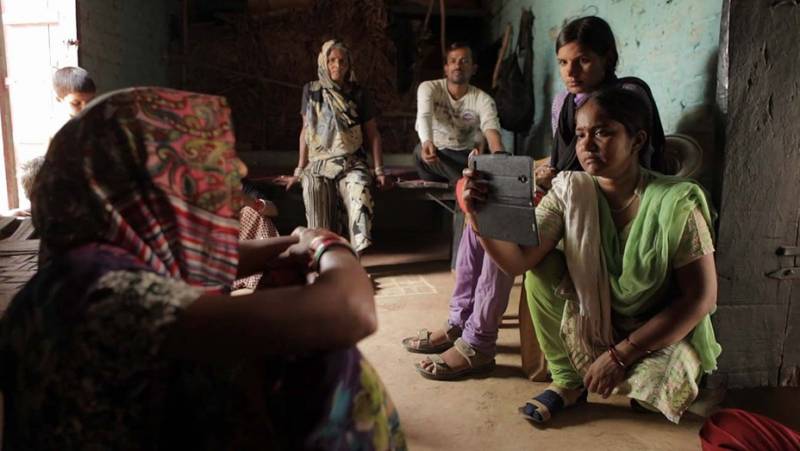We’ll have to wait yet another year to dance in our seats at one of the highlights of the Bay Area film festival calendar. I’m referring, obviously (or mysteriously, if you’ve never had the pleasure), to 3rd i’s annual Bollywood blowout at the Castro. Indeed, the entire San Francisco International South Asian Film Festival, which continues through Nov. 16, is online for the second consecutive year.
Couch-dancing at home is possible with the U.K. documentary White Riot, though foot-stomping (and irritated neighbors) is far more likely. Rubika Shah’s crackling 2019 history of the Rock Against Racism movement of the mid-late ’70s (which would have also fit perfectly in the recent Decibels Music Film Festival) adopts the cut-and-paste visual aesthetic of RAR’s handmade ’zine Temporary Hoardings to excellent effect, summoning the punk sensibility without it feeling gimmickry.
I would have enjoyed even more rock (for once) under the archival film and photos and splendid contemporary interviews. But I shouldn’t let my affection for the Clash obscure the relevance of White Riot: With white nationalism once again climbing the charts, now is the time for a similar youth-driven coalition of anti-fascist street protests and outdoor concerts—in the U.S.
The power of both individual and organizational conscience is also on full display in Sushmit Ghosh and Rintu Thomas’ not-to-be-missed Writing With Fire. This ground-level portrait of the all-women newspaper Khabar Lahariya (Waves of News) closely follows three unbelievably brave reporters on the job and at home (where they find no respite from patriarchal prejudice and resistance) in Uttar Pradesh.



